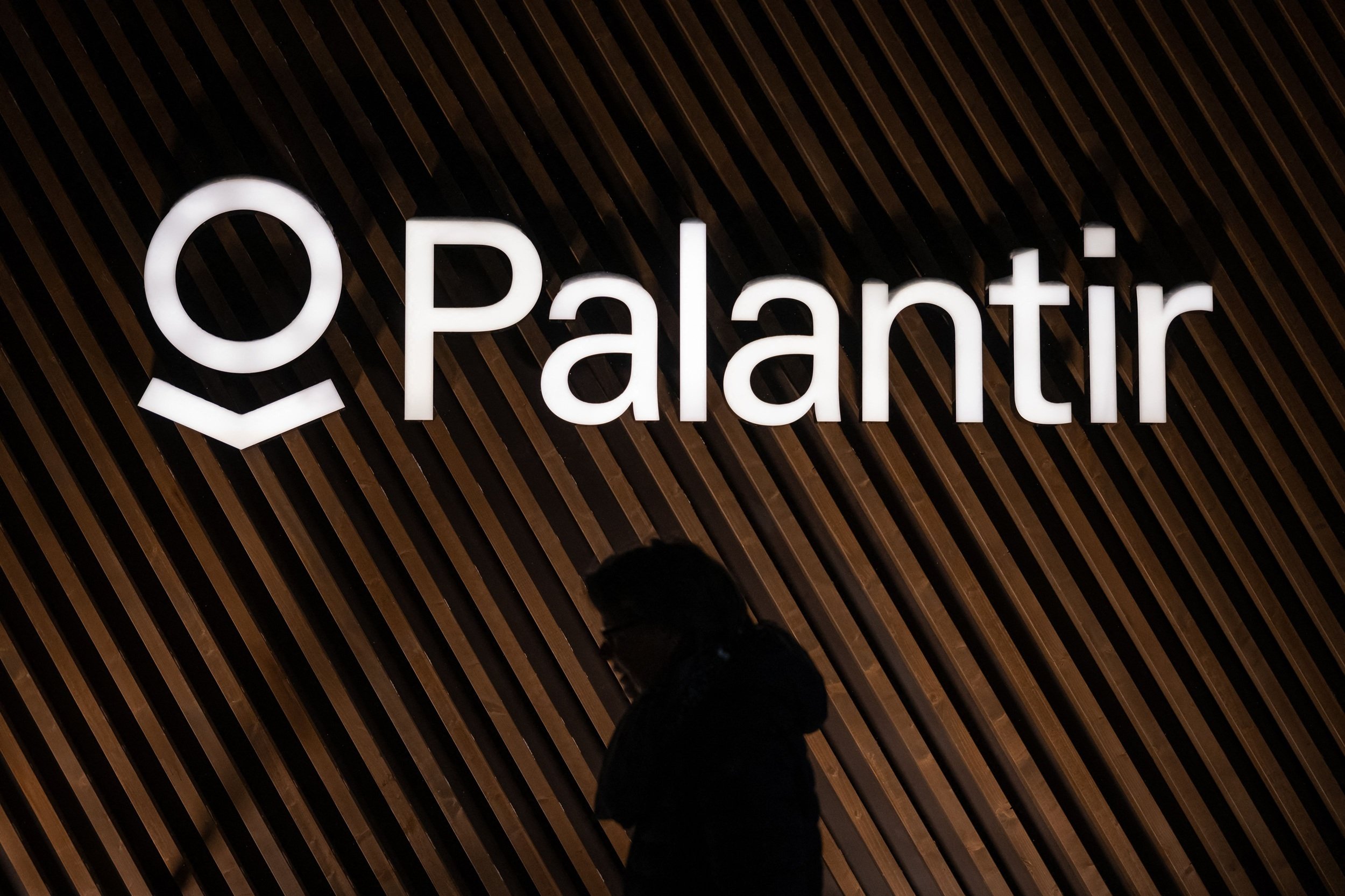Not since the advent of the internet has a technological revolution come along that promises to bump up the growth arc for corporate America. The analysts at PwC believe the combination of consumption-side effects and productivity improvements traced specifically to the rise of artificial intelligence (AI) will add $15.7 trillion to global gross domestic product in 2030.
With an addressable market this massive, it's no surprise to see public companies involved in AI hardware and applications rocketing higher.

Image source: Getty Images.
However, next-big-thing trends have historically had a knack for giving way to next-big-thing bubbles -- and artificial intelligence is unlikely to be the exception to this unwritten rule. Some of today's biggest AI leaders may be poised to become tomorrow's losers.
What follows are three market-leading AI stocks with mounting headwinds that can eventually (i.e., I'm not trying to time their respective peaks) plunge 50% or more.
Palantir Technologies
The first megacap AI stock that can plummet at least 50% in the coming months or years is data-mining specialist Palantir Technologies (PLTR +0.95%). Whereas some companies I'm, admittedly, not a fan of, Palantir is what I'd consider an excellent business with a completely unsupported valuation.
What makes Palantir a great company is its AI- and machine learning-driven software-as-a-service platforms, Gotham and Foundry. The former is used by federal governments for mission planning and execution, along with data gathering and analytics. As for Foundry, it makes sense of big data for businesses. Both of these segments are growing by sustained double-digit percentages and neither are replicable at scale by other companies.

NASDAQ: PLTR
Key Data Points
While companies with sustainable competitive advantages are often bestowed with a valuation premium by Wall Street, relative to their peers, Palantir's premium is otherworldly.
Looking back more than three decades at other megacap companies whose bubbles burst while on the leading edge of a next-big-thing trend shows price-to-sales (P/S) multiples typically peak between 30 and 40. Palantir's P/S ratio closed out July 18 at almost 123. Even if Palantir were to grow its sales by 30% annually over the next five years and its stock went sideways, it would still be in bubble territory.
The other significant worry for Palantir is Gotham. Though this segment is primarily responsible for lifting Palantir to recurring profitability, there's a very limited pool of federal governments that can access this platform. Further, it's unclear if government spending on defense will remain robust beyond President Donald Trump's second term.
Palantir is priced for perfection amid a growth trend that's anything but perfect.

Image source: Tesla.
Tesla
Whereas I view Palantir Technologies as a phenomenal business with an unsightly valuation, I struggle to find many redeeming qualities for electric-vehicle (EV) maker Tesla (TSLA +1.70%), whose EVs and full self-driving (FSD) software rely on AI and technology to safely navigate obstacles.
Tesla became one of Wall Street's most-influential businesses by riding its first-mover competitive advantages in the EV space. Under the leadership and vision of CEO Elon Musk, it expanded production and deliveries to approximately 1.8 million EVs in each of the last two years.
More importantly, Tesla has been profitable on a recurring basis for five consecutive years, with Musk overseeing the expansion of its energy generation and storage operations. This segment has the potential to minimize the cyclical ebbs-and-flows associated with Tesla's auto industry operations.
The issues I have with Tesla are threefold. To begin with, EV growth has completely stalled. The selling price of its four primary models (3, S, X, and Y) were slashed on more than a half-dozen occasions due to increasing EV competition and rising inventory levels. This has wreaked havoc on Tesla's vehicle margin.

NASDAQ: TSLA
Key Data Points
Secondly, Tesla's earnings quality is poor. Though the company remains decisively profitable, more than half of its pre-tax income has consistently come from automotive regulatory credits given to it for free by governments and net interest income earned on its cash. President Donald Trump's One Big, Beautiful Bill removes these U.S. regulatory credits, and the Federal Reserve is currently in a rate-easing cycle, which threatens to lower future interest income-earning potential. In other words, non-innovative channels are driving Tesla's profits.
Lastly, I view Musk as more of a lability than an asset to Tesla. His habit of overpromising and underdelivering on innovations has grown stale. Tesla's robotaxi launch was underwhelming; its FSD software hasn't reached Level 5 autonomy as promised more than a decade ago; and Cybertruck sales have come in well below expectations. If these unfulfilled promises are backed out of Tesla's market cap, its stock would fall far more than 50%.
Nvidia
I know it's Wall Street blasphemy to say this, but the third AI stock that can eventually plunge 50% or more is the face of this technological revolution, Nvidia (NVDA +1.98%).
Nvidia gets lumped in with Palantir in the sense that I recognize it's a phenomenal business, but its valuation (when combined with other headwinds) makes absolutely no sense.

NASDAQ: NVDA
Key Data Points
Nvidia's claim to fame is that its Hopper and Blackwell graphics processing units (GPUs) are the clear top options by businesses operating AI-accelerated data centers. With supply chains unable to keep pace with overwhelming demand for AI hardware, Nvidia has been able to sell more of its chips each quarter, as well as charge a triple-digit premium for its hardware, relative to its direct external competitors.
Additionally, Nvidia should be able to sustain its compute advantages. CEO Jensen Huang expects to bring a new advanced AI chip to market annually, with Blackwell Ultra (2025), Vera Rubin (2026), and Vera Rubin Ultra (2027) following Hopper and Blackwell. It's unlikely that any external competitors come close to the compute capabilities of Nvidia's hardware.
But as I pointed out earlier, there hasn't been a next-big-thing technology in decades that's avoided an early stage bubble-bursting event. Investors consistently overshoot when it comes to early adoption rates and utility for new innovations -- and AI is unlikely to be the exception. If an AI bubble forms and bursts, arguably no stock would be hit harder than Nvidia.
Competition is another clear issue for Nvidia. Despite maintaining its compute advantages, Nvidia can still lose out on valuable data center real estate. The biggest threat just might be that many of its largest customers by net sales are internally developing AI-GPUs to use in their data centers. These chips are less costly and more readily available than Nvidia's often-backlogged hardware.
Rounding things out, Nvidia is nearing a P/S ratio of almost 29, which borders on the aforementioned bubble territory I discussed earlier.





